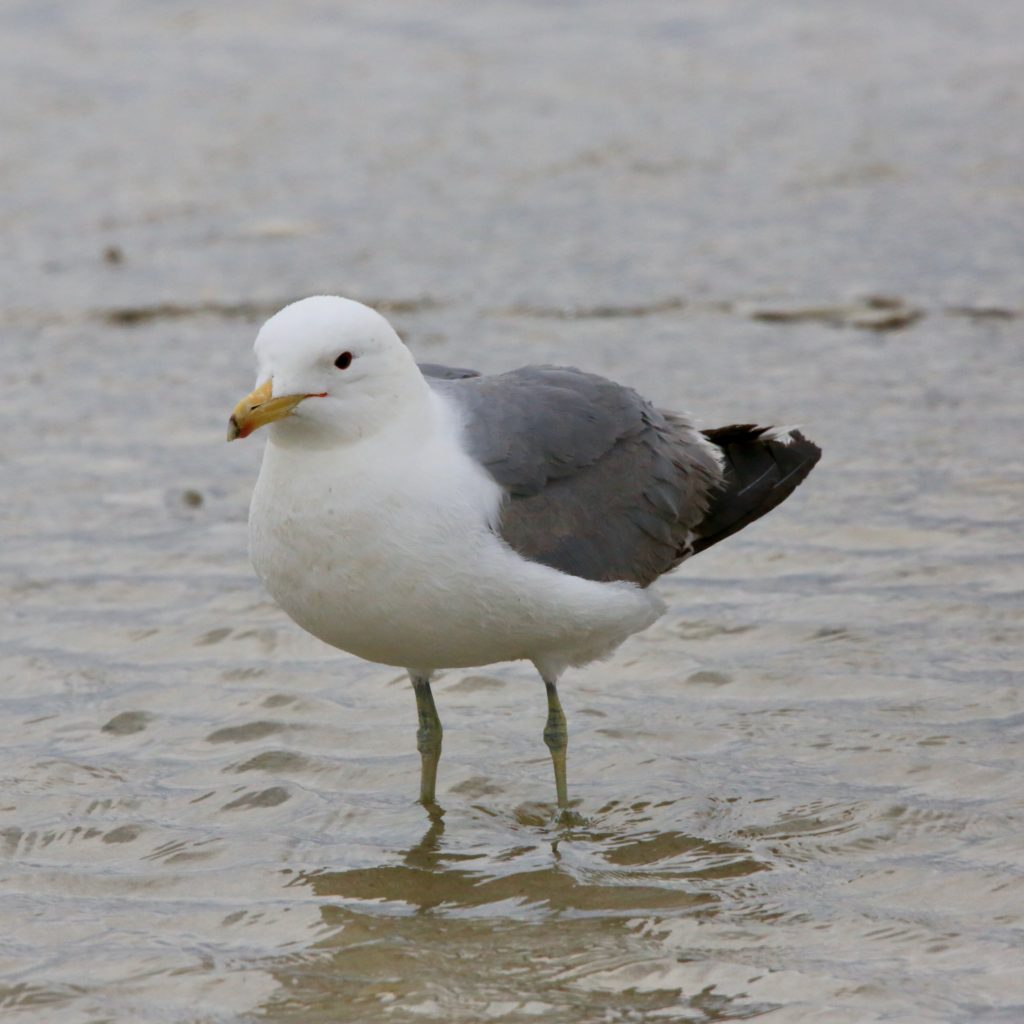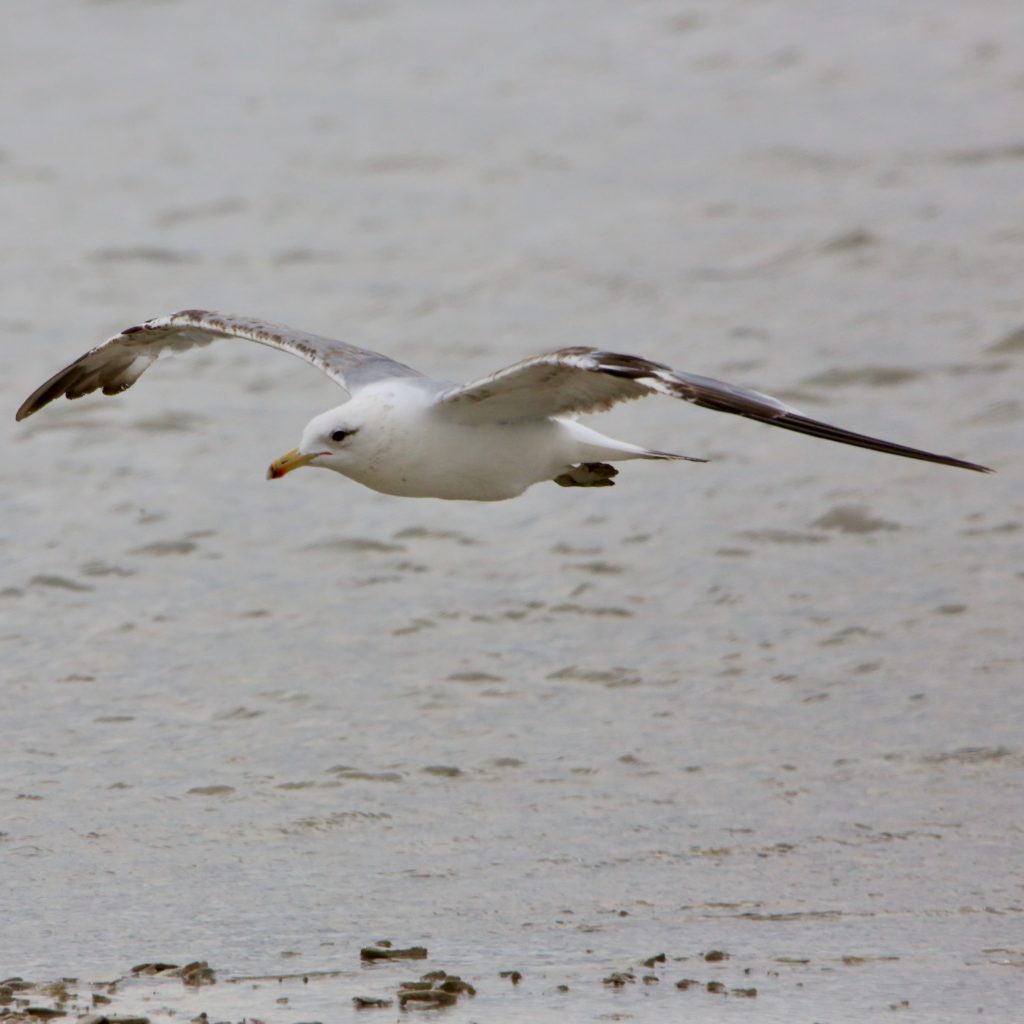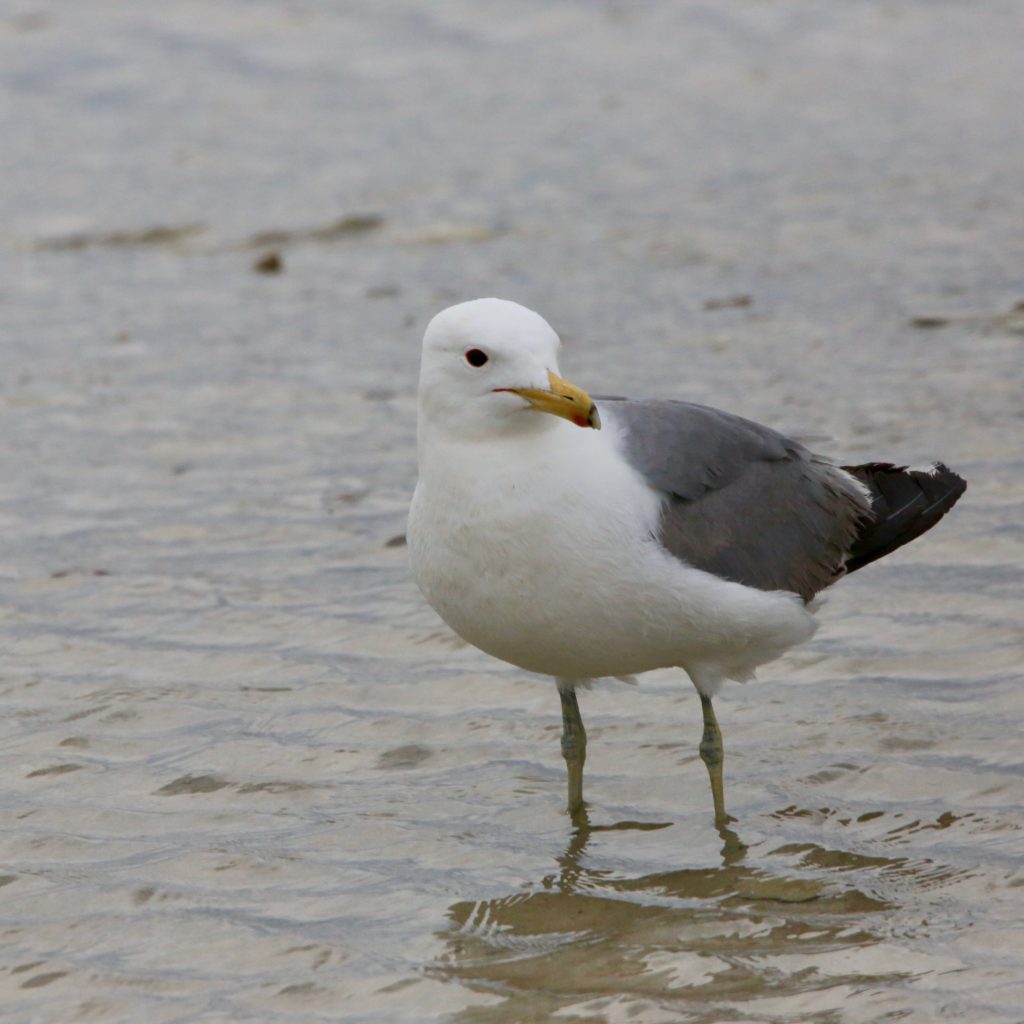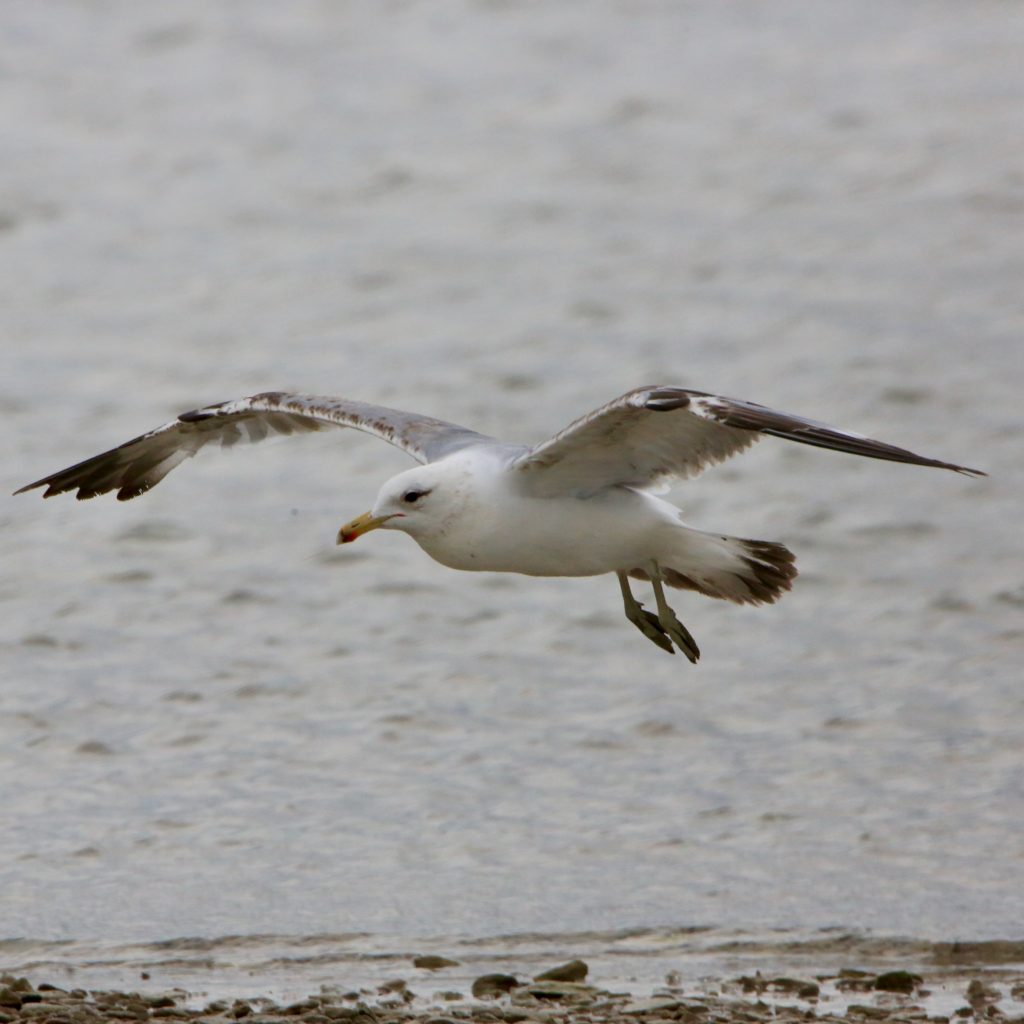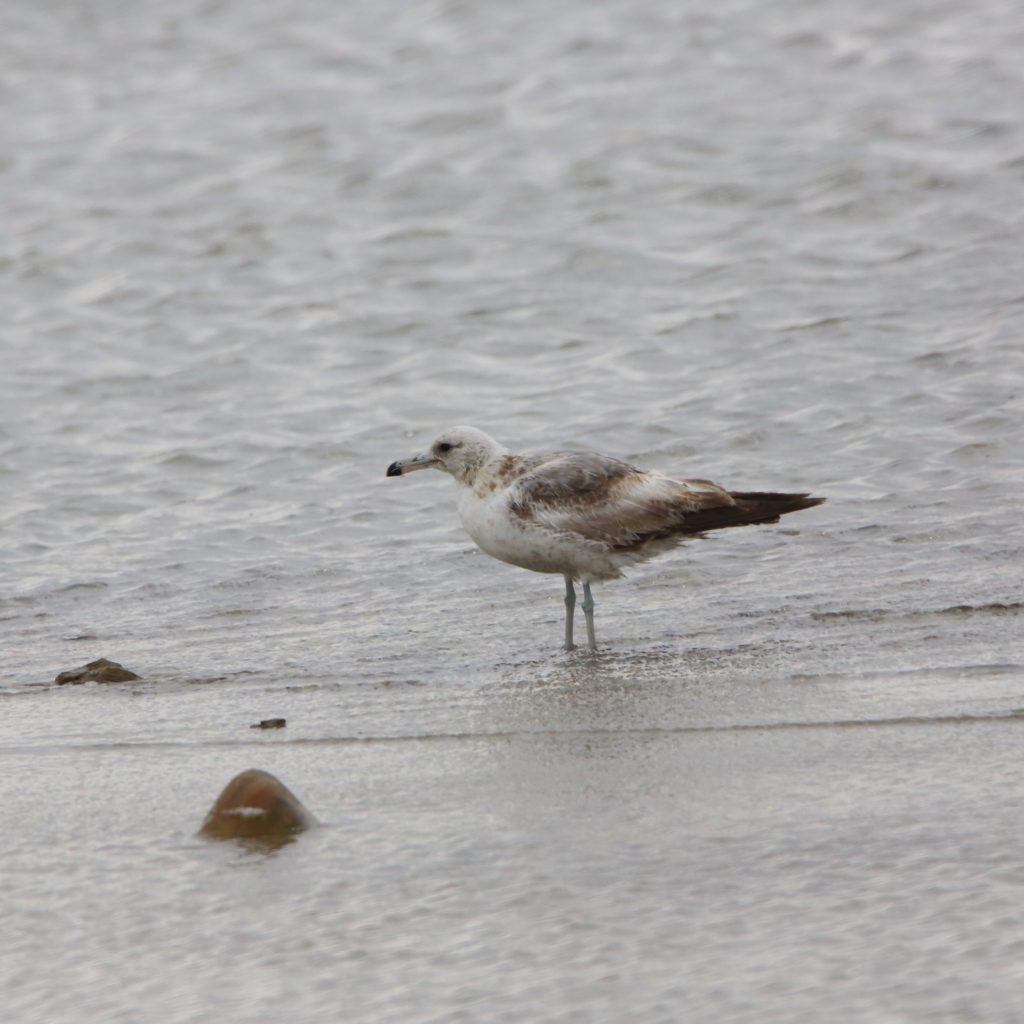
California Gull
A California Gull is a fun bird to see while bird watching. Below are some tips to help you identify California Gulls. We have also put together a list of fun California Gull t-shirts, California Gull bird patches, bird houses, bird feeders, binoculars, stickers and other fun bird watching items.
About the California Gull
The California Gull is one of the most flexible and laid-back birds. They love coastal areas and are also found in inland areas away from the coast.
Description and Identification
These medium-sized gulls are approximately 18.5 – 21.3 inches in length with round heads and slender bills. Their long and pointed wings span 51.2 inches. Adults have white heads with darker grey backs, yellow legs, and dark eyes. They have yellow bills with a small black ring and a red spot on their lower mandible – a feature that is brighter on breeding gulls. Breeding and non-breeding adults are also differentiated on the basis of brown streaks that are visible on the heads of nonbreeding adults. Juveniles are mottled grey with pink bills and legs, only beginning to resemble the adults after three years.
California Gull Color Pattern
Breeding California Gulls are usually white-headed with a medium gray back, dark eye, and yellow legs. Non-breeding California Gulls on the other have brown streaks on the head. Typically, the California adults have a yellow bill with a small black ring and a red spot on the lower mandible (brighter than those on breeding gulls).
The California Gull molts twice a year, in the first year they are brown and white with a paler face. In the second year, molted California Gulls are brown but start to show some gray plumage on their back.
California Gull Size
The California Gull is a medium-sized bird with a physique similar to that of a Herring Gull.
The relative size for both sexes is:
- Length: 18.5-21.3 in (47-54 cm)
- Weight: 15.2-36.9 oz (430-1045 g)
- Wingspan: 51.2 in (130 cm)
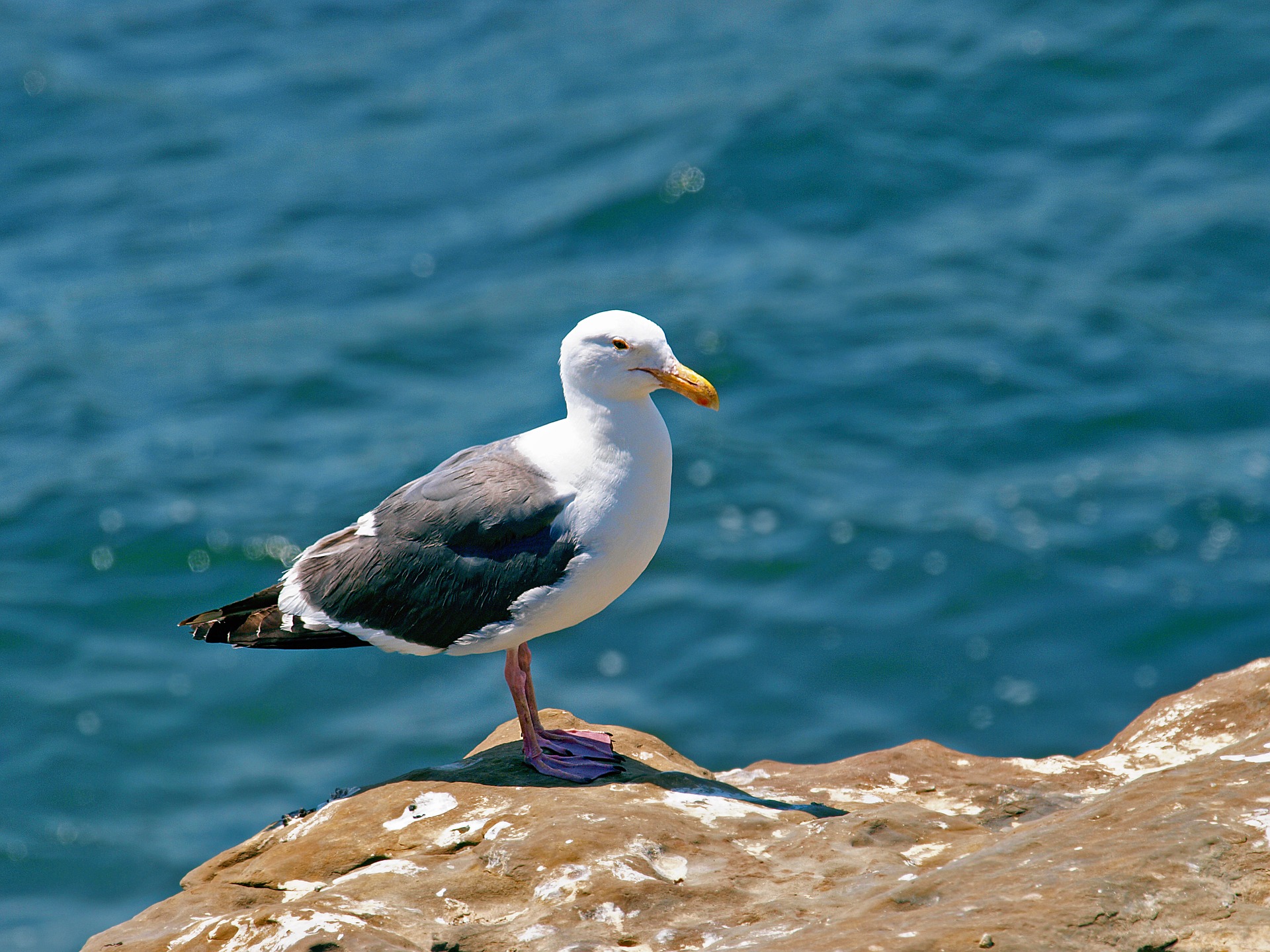
California Gull Behavior
- These gulls tend to breed in colonies along the coast during the winter season.
- California Gulls are also strong, nimble fliers and opportunistic hunters that forage from the air, water and on foot.
What California Gull Eat
California Gulls are versatile feeders that are also omnivorous. They consume a wide range
of aquatic animals, insects, small land mammals, and plant-based food matter. Their
summer diets inland are mostly insects like grasshoppers, mayflies, and other invertebrates
like spiders and earthworms. They also consume rodents, eggs and nestlings of other birds,
and carrion. During the winters, they adopt coastal diets and feed on brine shrimp, fish, and
other marine life in open areas around coasts. Plant-based matter can include fruits like cherries or nuts. They may scavenge for food from the ground, chase flying insects, pick
prey off the surface of the water, or may plunge into the water after fish.
California Gulls can eat close to anything that can fit into their mouths. They are omnivores that eat fish, cherries, small mammals, carrion, garbage, and much much more.
Where California Gulls Live
Natural breeding habitats for these birds typically include sparsely vegetated islands and
levees in inland lakes and rivers but can also include salt ponds. Their breeding colonies
range from sea level to 9,000 feet elevations and are usually surrounded by water to prevent
predators. They may forage up to 40 miles away during breeding seasons, opting for open
areas like farm fields, meadows, scrublands, yards, orchards, pastures, and garbage dumps.
They tend to stay away from heavily forested areas throughout the year, and typically winter
along the Pacific Coast in rocky shorelines, river deltas, estuaries, and beaches.
These birds breed in islands that are sparsely vegetated, lakes, and rivers. When hunting for food they look in open areas. Over the winter season, however, they forage mostly in marine areas along the Pacific Coast.
Range and Migration

California Gulls are medium-sized gulls that closely resemble Herring Gulls and Ring-billed
Gulls. They are found nesting around lakes in the interior of western Canada and the United
States and are commonly found wintering along the Pacific Coast. These birds have been
remembered by history owing to them rescuing the crops of the Mormon settlers from the
grasshopper plague in 1848; the event subsequently inspired a seagull monument dedicated
to them in Salt Lake City. They range from western and central Canada to the pacific coast
along Baja Peninsula in Mexico. Except for a small population of resident birds in the
interiors of western United States, these birds are migratory. The northernmost populations
in Canada migrate west or southwest to the Pacific Coast, with surprisingly few moving to
the Gulf Coast. Birds that are too young to breed may remain along the Pacific Coast
throughout summer.
California Gull Lifecycle
Their breeding season begins in the months of May to July. Once the birds have found their mates and built their nests for about a week and laying begins. The female bird lays two to five eggs that hatch 24 days later.
California Gull Nesting
Nesting locations are selected by both members of a pair as they walk around their territory
and dig small scrapes until they find a suitable spot. The nests are built by both sexes on the
ground in the open, or at the base of a small shrub. Since they nest in colonies, these
nesting locations may be reused in subsequent years. The structure of the nest is made with
small pieces of bones, feathers, grasses, and other pieces of vegetation that the female
shapes with her body to form a cup. The size of the nests depends on the amount of lining in
the cup and may range from a few scrapes on the ground to large depressions with a
surplus of feathers and vegetation.
Ornithology
Anatomy of a California Gull
Anatomy is the study of animals or other organisms and their parts. Bird Anatomy is the study of birds and their parts. Birds have beaks, wings, talons, feathers, and other parts that are important to learn about. Learning about bird anatomy will also help kids learn how to identify birds. We focus on the exterior, external, or outside anatomy of birds to help kids learn how to identify them.
Some other types of bird anatomy are the skeletal system, muscular system, circulatory system, respiratory system, and digestive system. Birds also have reproductive systems, nervous systems, and immune systems. Birds are amazing creatures.
FREE PRINTABLE BIRD ANATOMY INFOGRAPHIC
Here is a fun printable design to help kids learns about California Gulls.
CLICK HERE TO DOWNLOAD AND PRINT THIS FILE Bird Anatomy California Gull
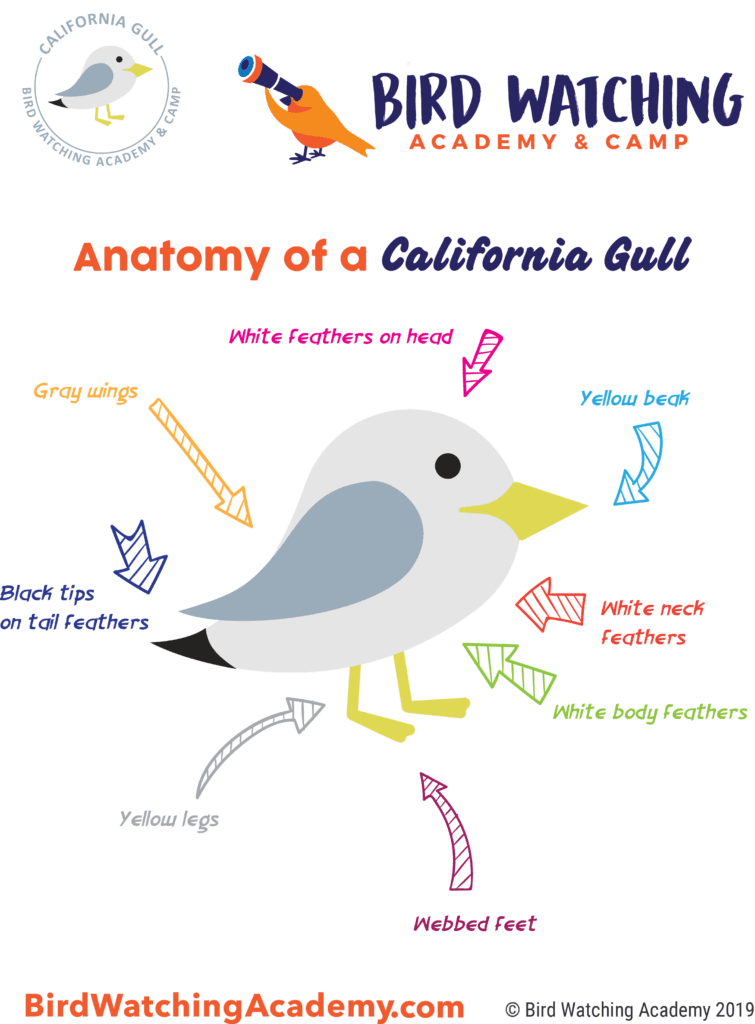
Below is a blank copy to test your kids on the bird anatomy of a California Gulls.
CLICK HERE TO DOWNLOAD AND PRINT THIS BLANK TEST FILE Bird Anatomy California Gull Test
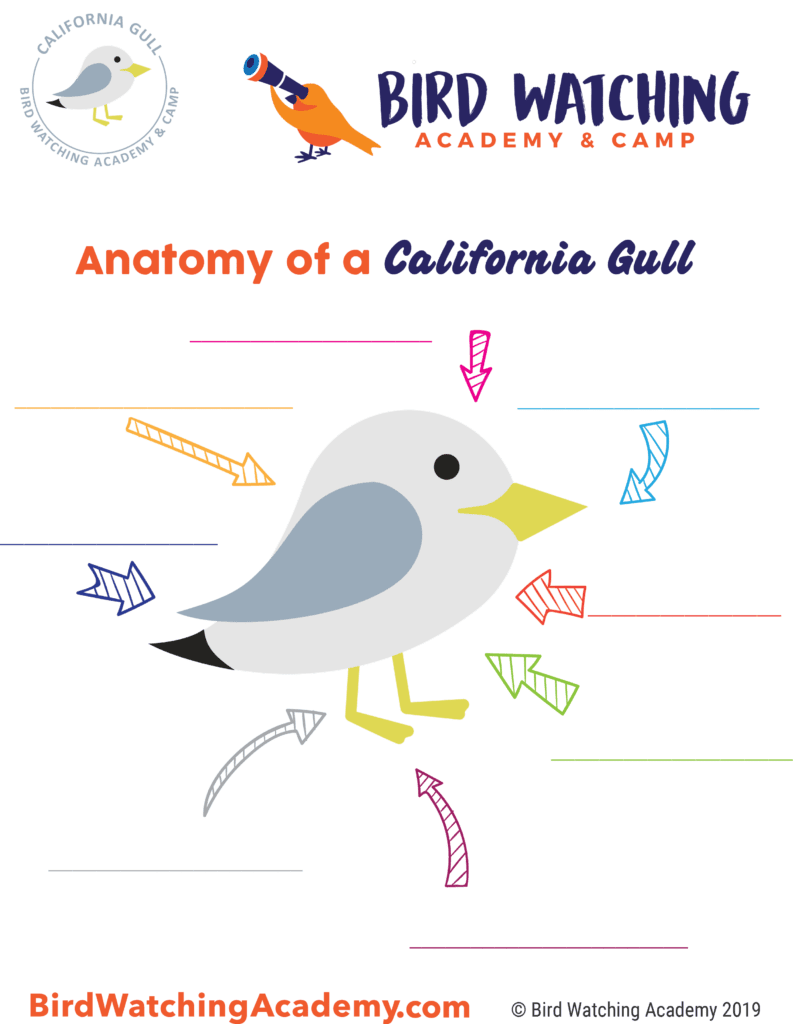
Bird Watching Academy & Camp Subscription Boxes
At Bird Watching Academy & Camp we help kids, youth, and adults get excited and involved in bird watching. We have several monthly subscription boxes that you can subscribe to. Our monthly subscription boxes help kids, youth, and adults learn about birds, bird watching, and bird conservation.
Bird Watching Binoculars for Identifying California Gulls
The most common types of bird watching binoculars for viewing California Gulls are 8×21 binoculars and 10×42 binoculars. Bird Watching Academy & Camp sells really nice 8×21 binoculars and 10×42 binoculars. You can view and purchase them here.
California Gull T-shirts
If you love the California Gull you should purchase a Bird Watching Academy & Camp T-shirt. To help support bird conservation we donate 10 percent to bird conservation activities.
California Gull Iron On Patches
Kids, Youth, and Adults love to collect our Bird Watching Academy & Camp iron-on patches. Our bird-watching patches help you keep track of the birds you have seen and identified. You can also display the patches on our Bird Watching Academy & Camp banners.
The California Gull is a great iron-on patch to start your collection with. The patches are durable and can be sewn on or ironed on to just about anything.
California Gull Stickers
Stickers are a great way for you to display your love for bird watching and the California Gull. We sell a monthly subscription sticker pack. The sticker packs have 12 bird stickers. These sticker packs will help your kids learn new birds every month.
Bird Feeders For California Gull
There are many types of bird feeders. Here are our favorite bird feeders for your backyard. We use all of these bird feeders currently. Kids will have a great time watching birds eat at these bird feeders. Using this collection of bird feeders will provide a wide variety and many types of birds.
Best Bird Houses for California Gull
There are many types of birdhouses. Building a birdhouse is always fun but can be frustrating. These 4 birdhouses have become our favorites. Getting a birdhouse for kids to watch birds grow is always fun. We spent a little extra money on these birdhouses but they have been worth the higher price and look great.


